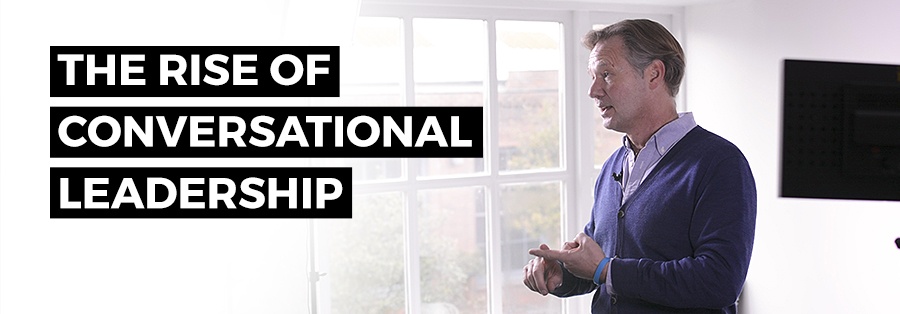 Modern leaders need to equip themselves with the right skills to adapt to the rise of conversational leadership, creating better dialogue throughout their organisations. Dik Veenman, founder of The Right Conversation, explains what the rise of conversational leadership is and why it matters.
Modern leaders need to equip themselves with the right skills to adapt to the rise of conversational leadership, creating better dialogue throughout their organisations. Dik Veenman, founder of The Right Conversation, explains what the rise of conversational leadership is and why it matters.
The time for conversational leadership has arrived. There is a growing group of business leaders who see conversation and dialogue as being at the heart of their leadership style.
This trend has been some time in the making. Research in Harvard Business Review (HBR) showed that participants from more than 100 organisations talked about their efforts to ‘have a conversation’ with their people or to ‘advance the conversation’ within their companies.
These conversations are much more interactive, informal and personal than traditional corporate communications, where the top determines and distributes content, and where leaders talk rather than listen. HBR conclude that this style of leadership is the key to improving employee engagement in today’s flatter and more networked organisations.
But while the personal style of senior executives is important, in large organisations people at the top can obviously only have real conversations with a small number of employees. So conversational leadership depends less on the heroic actions of a few individuals, and more on collaborative leadership practices distributed throughout an organisation.
Many see the shift to conversational leadership as essential and inevitable — it is just the way the world is heading. In the modern networked organisation, centralised command and control management is high cost, slow and uncompetitive. It simply does not work in organisations that depend on employees to use their initiative to provide high-quality service.
It is also in touch with broader social change. Deference has been replaced by reference. Rather than taking the word of a leader, we are more likely to make our minds up by talking to peers or looking online. Employees are better educated, better informed and they expect to be heard.
“People are better informed, better educated and want to know why you do something and what the purpose of it all is. You are still the boss, and it is you who makes the decisions, but you have to explain things much better than you did 20 or 30 years ago.
Man-management has become more sensitive because you have to treat people in a more tactful way. It is the way in which society has moved.”
— Arsene Wenger, Manager Arsenal FC
Finally, the risks caused by remote and autocratic leadership were thrust into the political spotlight by the financial crisis of 2008. Fred Goodwin, described as a ‘dominant CEO’ by the FSA, ‘intimidated’ colleagues to the extent that his morning management meetings were known as ‘morning beatings’. His counterpart at Lehman Brothers, Dick Fuld, famously arranged his schedule so that he never met employees without a formal appointment. These were not leaders who welcomed challenge or debate.
Since the crash, people have been demanding that leaders develop corporate cultures that are more open, inclusive and accountable, paving the way for a more conversational style.
Our research suggests, perhaps unsurprisingly, that conversational leadership has been much more widely accepted in principle that it has been adopted in practice. Leaders want to improve the quality of dialogue at work — they see the need and they see the benefits — but the insuperable barrier to change is always ‘the culture’. Employee expectations and the external environment may have changed, but outdated management practices and mind-sets persist like echoes from a bygone age.
So where to start?
Ask ‘how do we talk to each other around here?’. Then try to break ‘the culture’ down and understand what inhibits open conversation. Is it process, opportunity, mindset or skills, or a combination of all of these? This can then be used to promote better conversations; working with the culture rather than against it.
Conversational leadership replaces the simplicity of monologue with the unpredictable vitality of dialogue. Conversation is open and fluid rather than closed and directive. To make it work, leaders need to cultivate the art of listening to people at all levels, and speaking with them directly and authentically.
Skills and techniques to improve conversational skills like inquiring, challenging and dealing with conflict can be taught. This is important for many leaders to increase their confidence, particularly in ‘difficult’ conversations.
The rise of conversational leadership may be inevitable, as the pundits predict, and it will take a brave leader to ignore this shift, but the past casts long shadows… it is up to leaders to take the first steps.
How would you like to start a conversation? Click on the icons below, or use our interactive video tool.